The Batu Caves are among the most impressive sights in Malaysia. Just a few kilometers from Kuala Lumpur, imposing limestone cliffs rise up, formed millions of years ago. The colorful stairs leading to the famous Temple Cave are not only a popular photo opportunity, but also provide access to a truly spiritual place.
Particularly impressive is the 42-meter-high golden statue of the god Murugan, the largest of its kind in the world. The surroundings of the Batu Caves, with monkeys, tropical plants, and colorful markets, also make the place so lively and diverse. In the following article, we’ll show you how best to explore the Batu Caves, what you should know before your visit, and which highlights you absolutely shouldn’t miss.
- General information about the Batu Caves
- How to reach the Batu Caves
- The various caves and attractions
- Our best travel tips for the Batu Caves
- The Batu Caves during the Thaipusam festival
- Conclusion: Batu Caves
General information about the Batu Caves
The Batu Caves are one of the most important sanctuaries of Hinduism outside of India. Not only believers from all over the world come to this place, but also numerous tourists who want to learn more about Hindu culture. Even the first glimpse of the giant, golden statue of the god Murugan at the entrance is impressive. With their size and numerous details, they are an absolute highlight of the area.
The caves are over 400 million years old and once served as a place of refuge and ritual for indigenous peoples. However, the Batu Caves only became known in 1878 through the American naturalist William Temple Hornaday. Shortly thereafter, the Tamil trader K. Thamboosamy Pillai recognized the spiritual potential of the place and dedicated the largest cave to the Hindu god Murugan.
Since then, they have been an important place for the worship of the god Murugan, especially during the annual Thaipusam festival. More on this later in the article. Today, the caves have developed from a spiritual place into one of Malaysia’s most famous attractions.

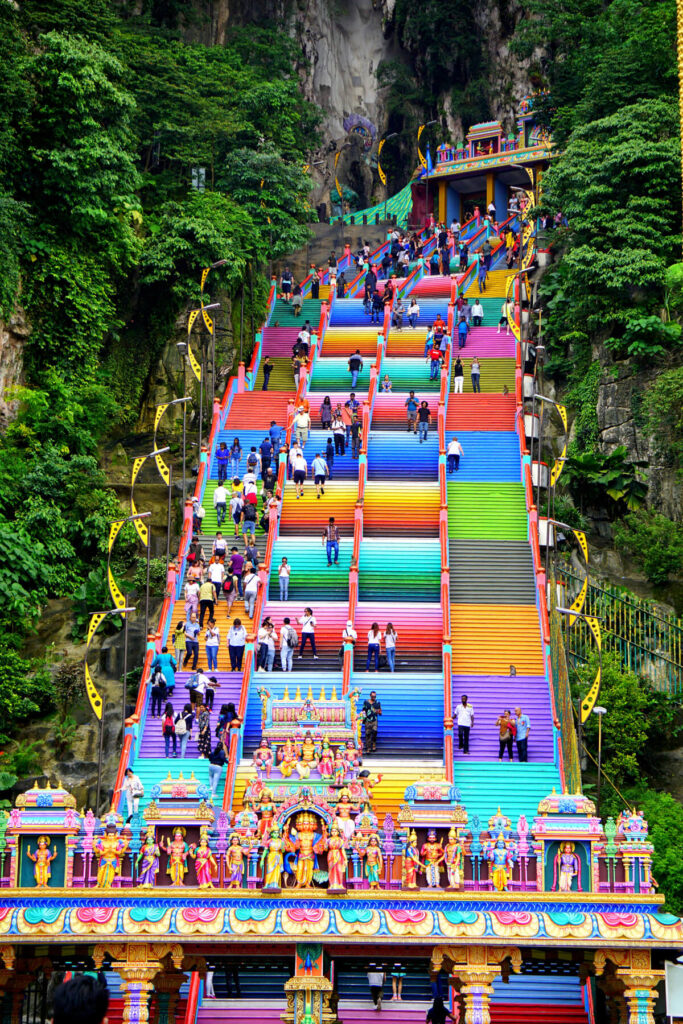
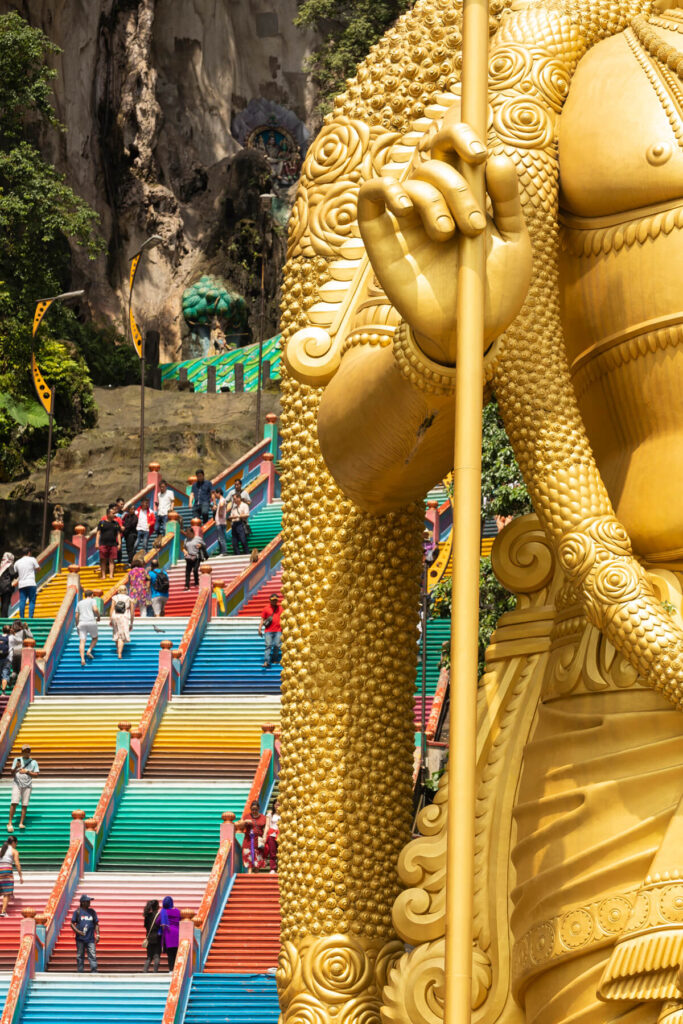
How to reach The Batu Caves
The Batu Caves are located about 15 kilometers north of Kuala Lumpur and are very easy to reach. You have the following options:
By train: The KTM Komuter trains take you from, for example, the “Bank Negara” station directly to the “Batu Caves” station, which is just a few minutes’ walk from the caves, in around 30 minutes.
By bus: Various bus lines run from Kuala Lumpur to the Batu Caves. The easiest way is to take a bus from KL Sentral or the Pudu Sentral bus station (e.g., kl117 bsn lebuh ampang).
By taxi or Grab: If you don’t feel like taking the bus or train, a taxi or Grab (Asia’s Uber) is the fastest option. The journey takes approximately 15–25 minutes, depending on traffic.
By car: If you have a rental car, you can easily reach the Batu Caves via the expressway. There is a large parking lot in front of the Batu Caves, which costs RM2. It can get quite crowded during peak hours and festivals.
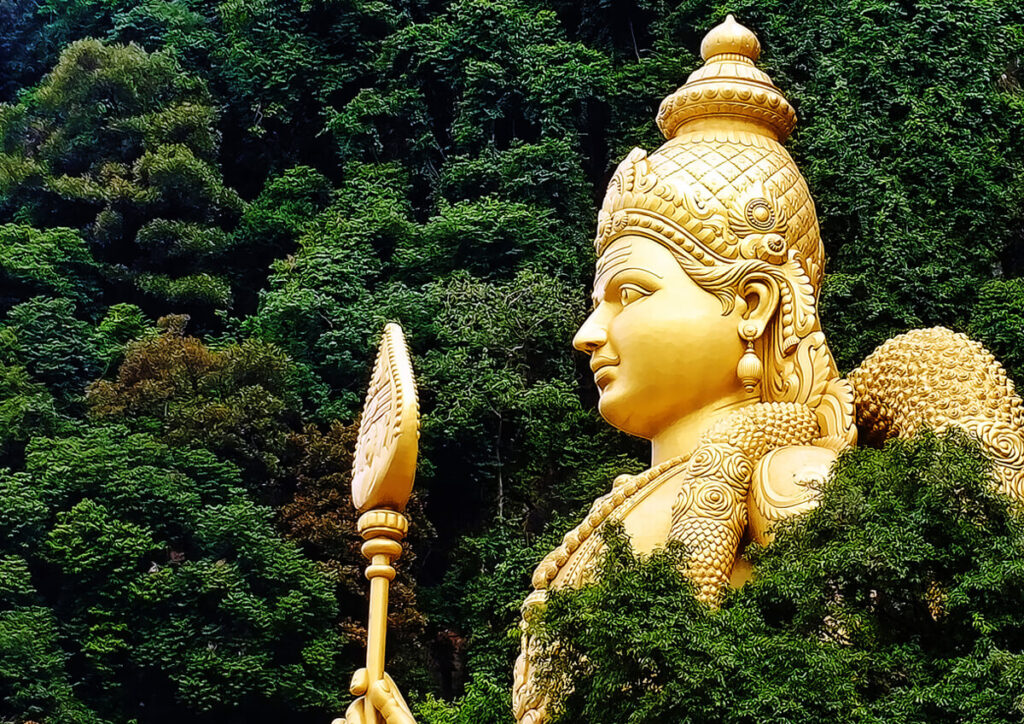
The different caves and attractions
Take your time to explore the different caves and absorb the atmosphere. Each cave tells its own story, making the Batu Caves a special experience! Plan at least 1 to 2 hours for your visit.
The Golden Statue of the God Murugan
The gigantic golden statue of the god Murugan can be seen from afar. At 42.7 meters high, it is the largest Murugan statue in the world and a popular photo subject. At the same time, it also symbolizes the Batu Caves’ deep connection to Hindu culture and their significance as an important spiritual site.
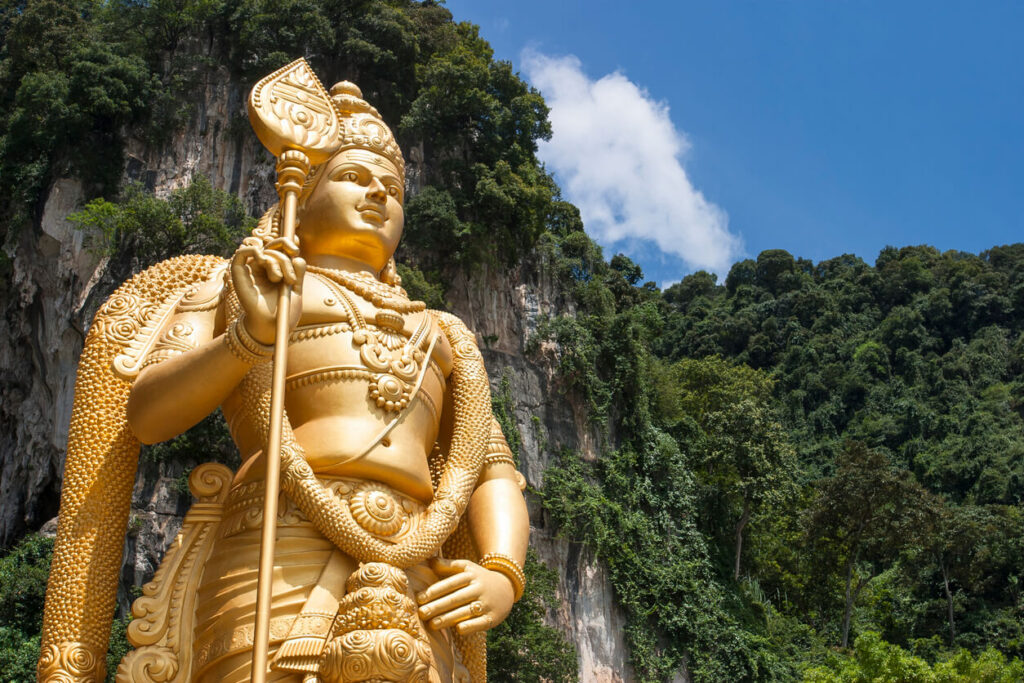
The Main Attraction: The Temple Cave
The Temple Cave is the heart of the Batu Caves and the largest of the caves. After conquering the 272 colorful steps, you will be rewarded with a gigantic cave whose high ceilings and natural rock formations are truly impressive. Here you will find several Hindu shrines dedicated to the god Murugan, as well as a very mystical atmosphere that seems magical, especially early in the morning or at sunset. Entrance to the Temple Cave is free.
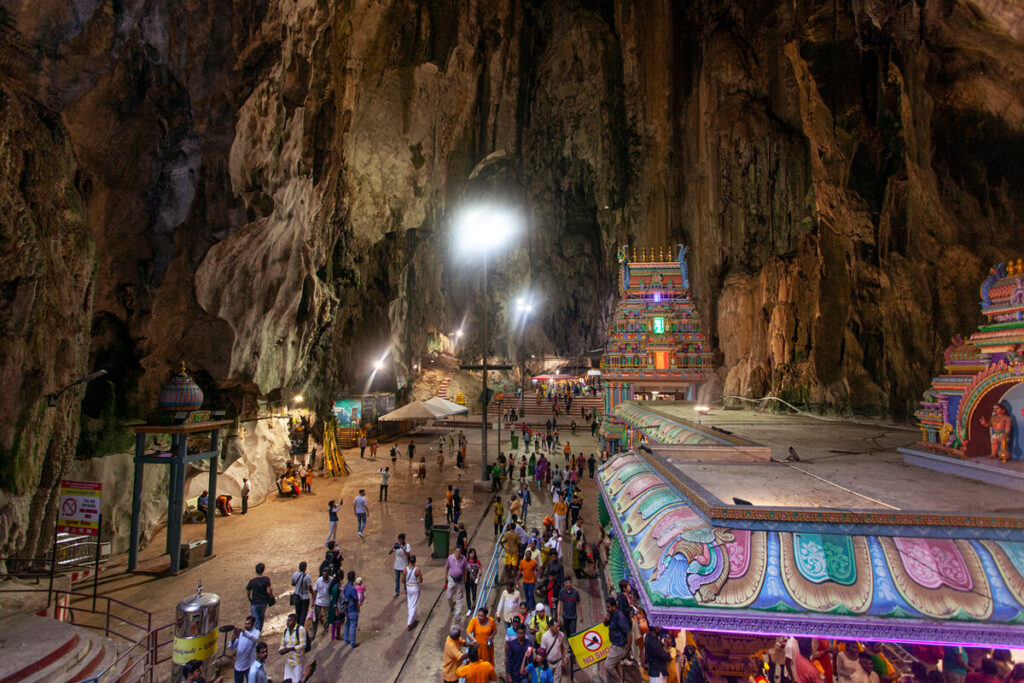
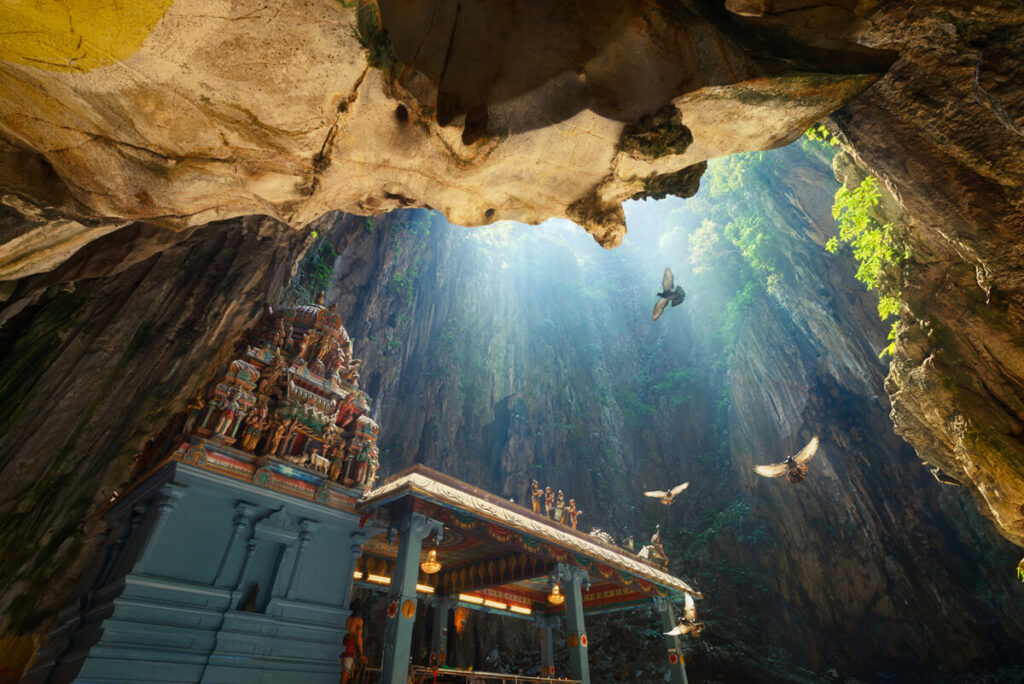
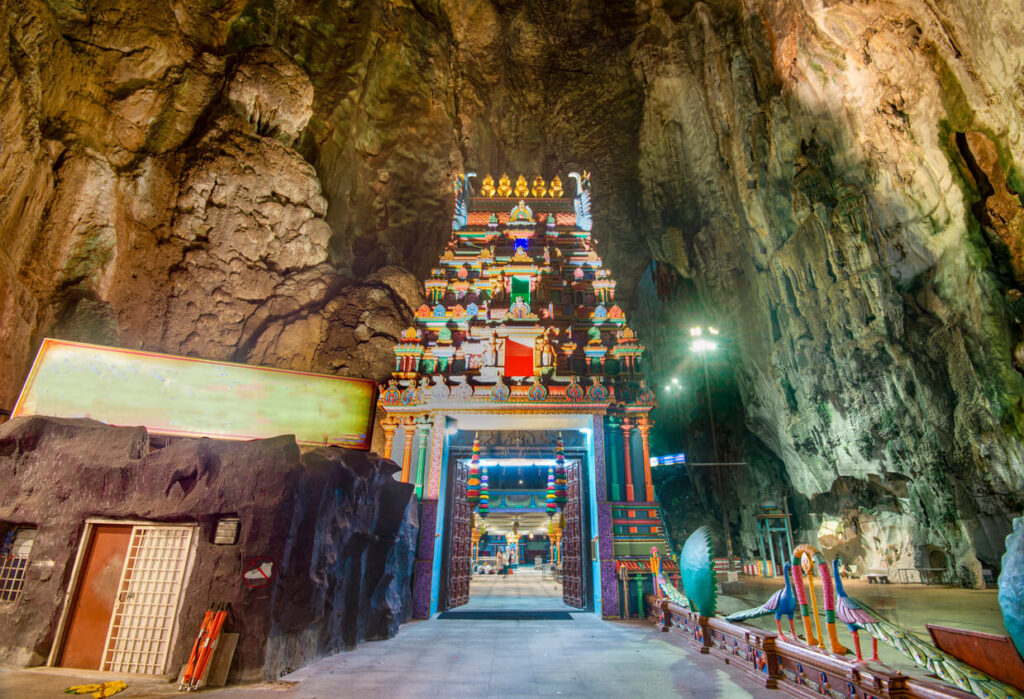
The Ramayana Cave
The Ramayana Cave is a bit off the beaten track and is also an eye-catcher. Here, you’ll find colorful murals and numerous figures depicting scenes from the Hindu epic Ramayana. Another highlight of the Ramayana Cave is the giant statue of Hanuman, the famous monkey god. Entrance is RM5 per person.
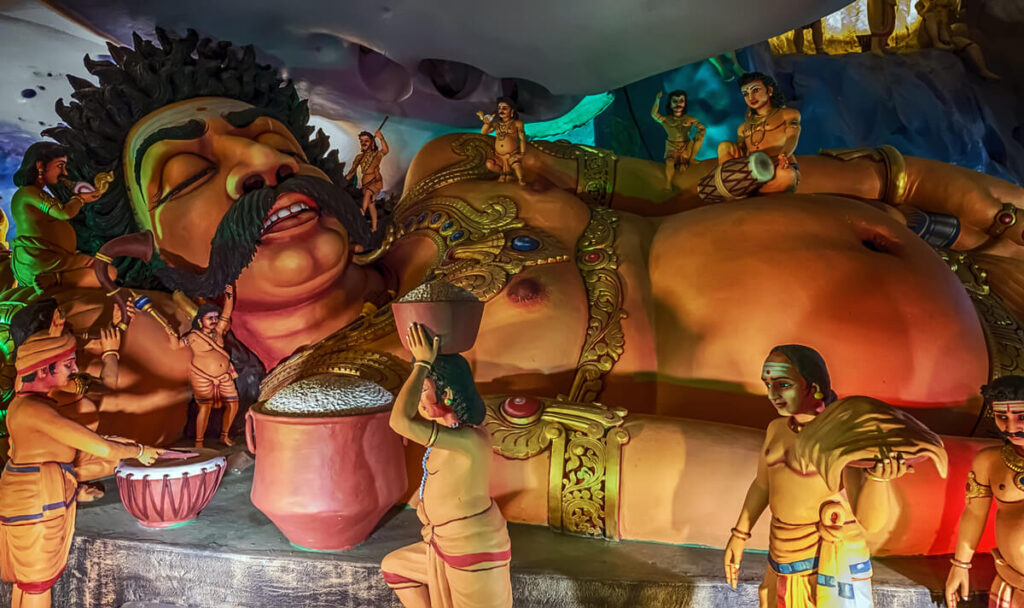
The Dark Cave
The Dark Cave is the longest cave system in the Batu Caves. It stretches for more than two kilometers and consists of six large chambers. However, only 450 meters are open to visitors, while another part of the cave is accessible for adventure tours upon request. The remaining part is open exclusively for scientific research.
To preserve the natural atmosphere of the cave, artificial light is avoided within the Dark Cave. Visitors are given a flashlight to explore the surroundings. The cave also impresses with its impressive formations such as stalactites and cave curtains.
Note: The Dark Cave has been closed since 2019 and is currently no longer accessible.
Our best travel tips for the Batu Caves
So, are you now keen to visit the Batu Caves? We’ve listed some important tips for your visit below:
Best Time to Visit
The best time of day to visit Batu Caves is early morning or late afternoon. Temperatures are much more pleasant in the early morning, and crowds are still manageable. Weekends and holidays in particular tend to get crowded, so plan your visit during the week if possible. A visit during the Thaipusam festival (usually in January/February) is a truly special experience, but be prepared for very large crowds. You can find out more about this further down in the article.
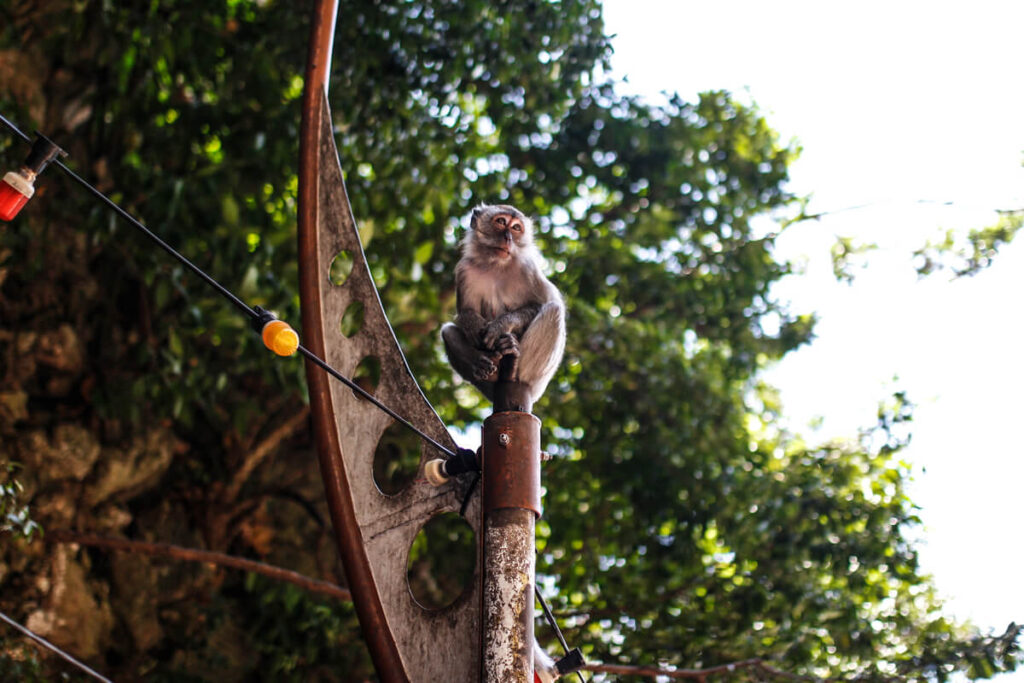
What to wear (dress code)
Since the Batu Caves are a holy place for Hindus, you should make sure you dress appropriately. Knees and shoulders should be covered. Women can bring a shawl or scarf if they are wearing something shorter. Flip-flops or sandals are useful, as it is warm and sometimes a bit slippery on the steps and in the caves.
Entrance Prices and Opening Hours
The caves are open daily from 6 a.m. to 9 p.m., although we recommend arriving early to avoid the heat and crowds.
- Temple Cave: Entrance is free.
- Ramayana Cave: Entrance costs approximately 5 MYR (approx. 1 Euro).
- Dark Cave: Currently closed.
Don’t feel like going there alone? You can book various guided tours from Kuala Lumpur.
Powered by GetYourGuide
What to bring
- Water: Drinking is always important, especially on hot days!
- Sunscreen and hat: The sun can really beat down on your head.
- Scarf or shawl: Practical for visiting the caves and temples.
- Camera: There are so many great photo opportunities. Be sure to bring your camera!
- Snacks: It’s always good to have a little snack with you. Small stalls are also available on site.
Tip: Keep an eye on your belongings, as the cheeky monkeys that roam everywhere like to steal water bottles, food, or even sunglasses!
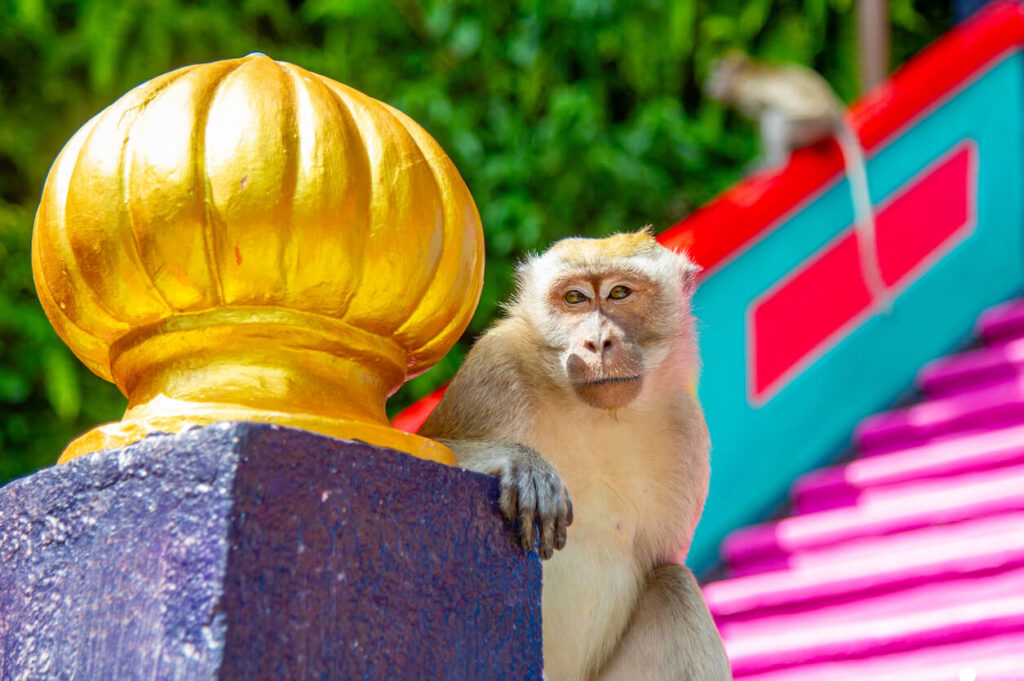
The Batu Caves during the Thaipusam festival
The Batu Caves are one of the liveliest and most fascinating places in Malaysia during the Thaipusam festival. Every year in January or February, the Hindu festival attracts millions of devotees and visitors. Purely by chance, we were there on this very special day and had the incredible fortune to experience this festival up close.
Thaipusam is a festival honoring the god Murugan, commemorating his birthday and his victory over the demon Soorapadman. The festivities begin with a nighttime procession in which devotees carry elaborate “kavadi” – large, colorfully decorated metal structures. These structures are often attached to the body with hooks or spears that are pierced through the skin and cheeks.
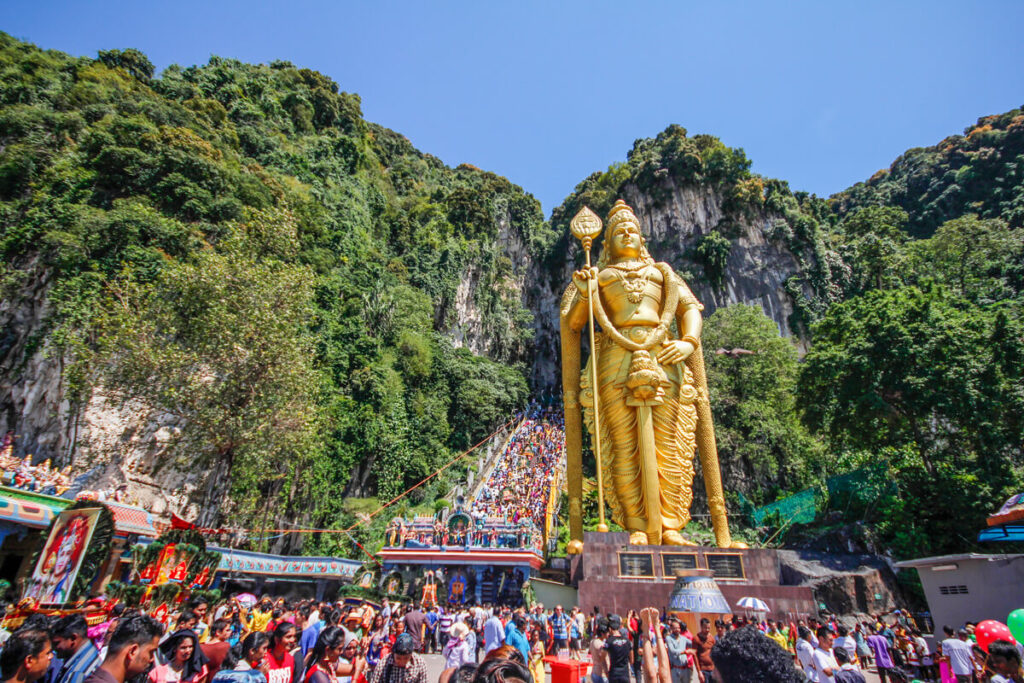
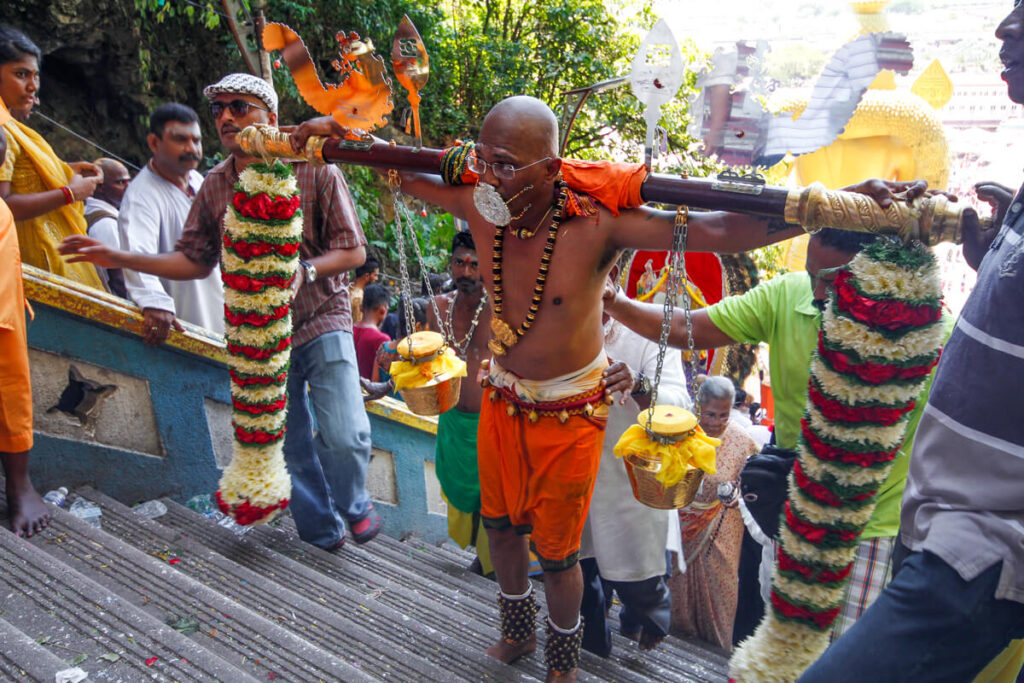

Trance States & Temple Hair
It was hard to comprehend this sight. We saw men in trance states, supported by attendants as they climbed the 272 steps up to Temple Cave. Some appeared completely exhausted, almost collapsing, yet they carried their offerings with a devotion we had never seen before. The atmosphere around the caves was overwhelming. Already at the train station, we were swept away by a large crowd. In front of the caves, there were men and women shaving their hair to offer it to the gods. From there, we continued toward the entrance in a sea of people, heat, and deafening music. The countless stalls and the loud, jumbled music were so overwhelming that we almost had to cover our ears.
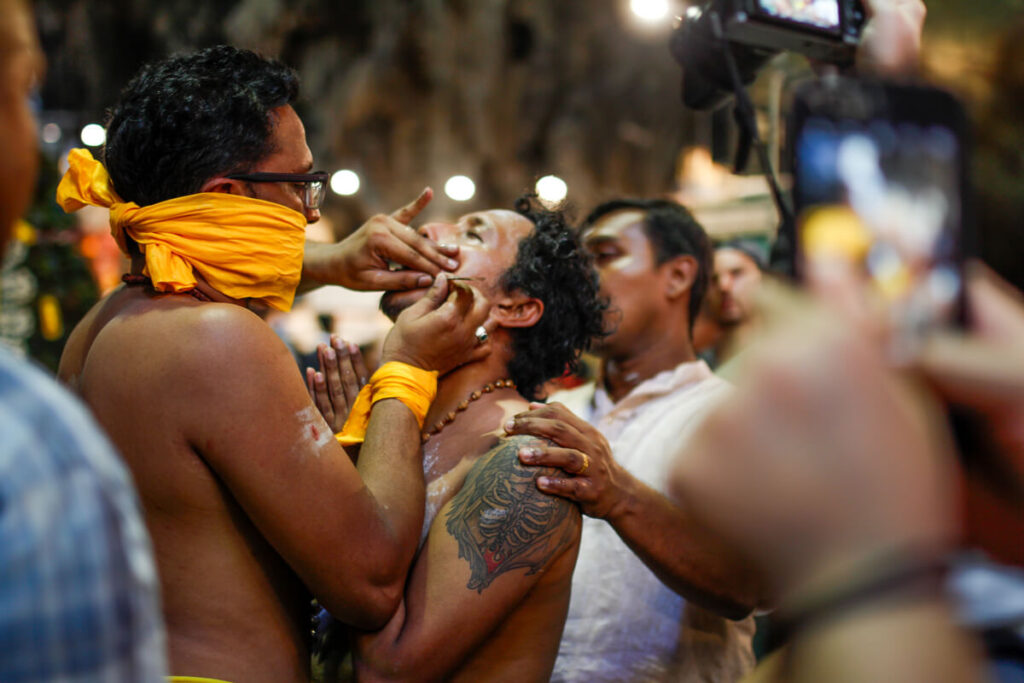
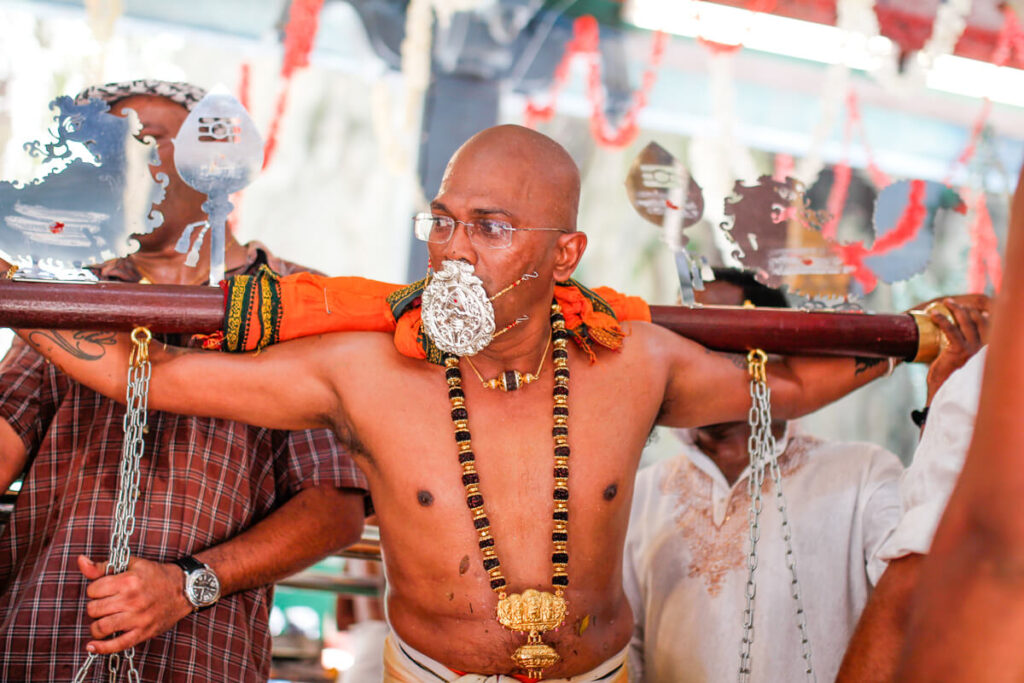
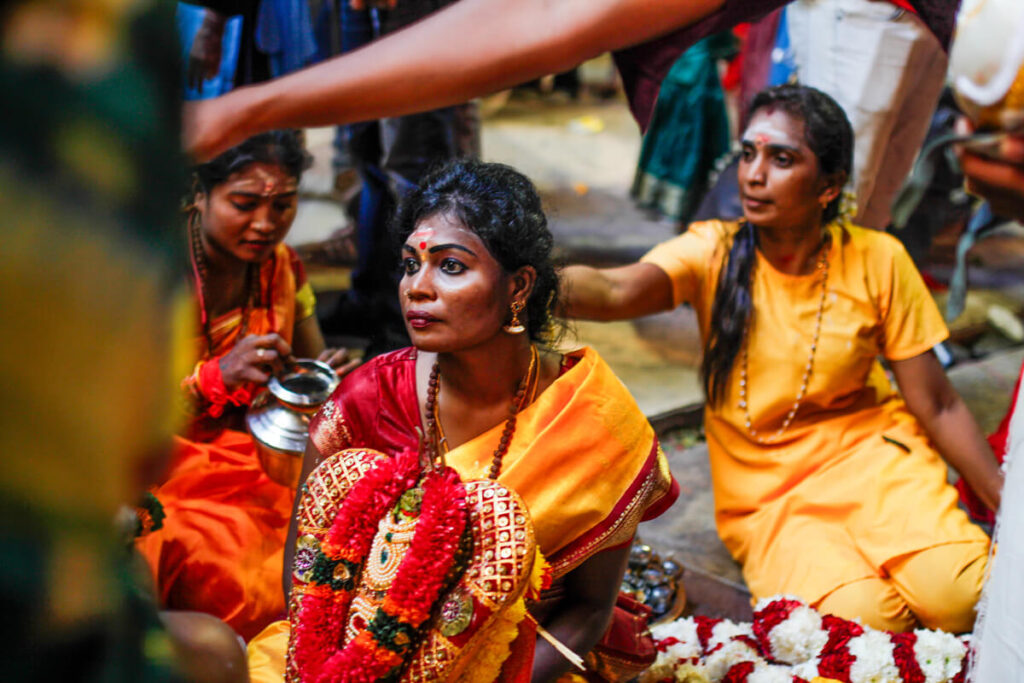
Between Thousands of devotees
The steps up to the cave were chaos. Thousands of people crammed their way through the narrow staircase, past monkeys waiting for a snatch of food. We were most impressed by the devotees with their kavadi. The heavy frames were decorated with colorful fabrics, flowers, and mirrors, and many devotees had metal arrows pierced through their cheeks.
Once at the top, the metal skewers were removed, and the wounds were sealed with ash—a ritual that left us speechless. The cave itself offered a fascinating contrast: amidst the hustle and bustle, it exuded a mystical tranquility. A ray of light shone through an opening in the rock onto a small temple, while leaves gently fell, creating an almost magical atmosphere.
This moment, amidst the crowds and rituals, felt like a window into a completely different world. Only later did we learn that we had witnessed one of the most important festivals in the Hindu world. Thaipusam is celebrated not only in Malaysia, but also in India and Singapore. For us, it was pure coincidence that we were there on that particular day. The Thaipusam Festival was definitely an intense and unforgettable cultural event for us.
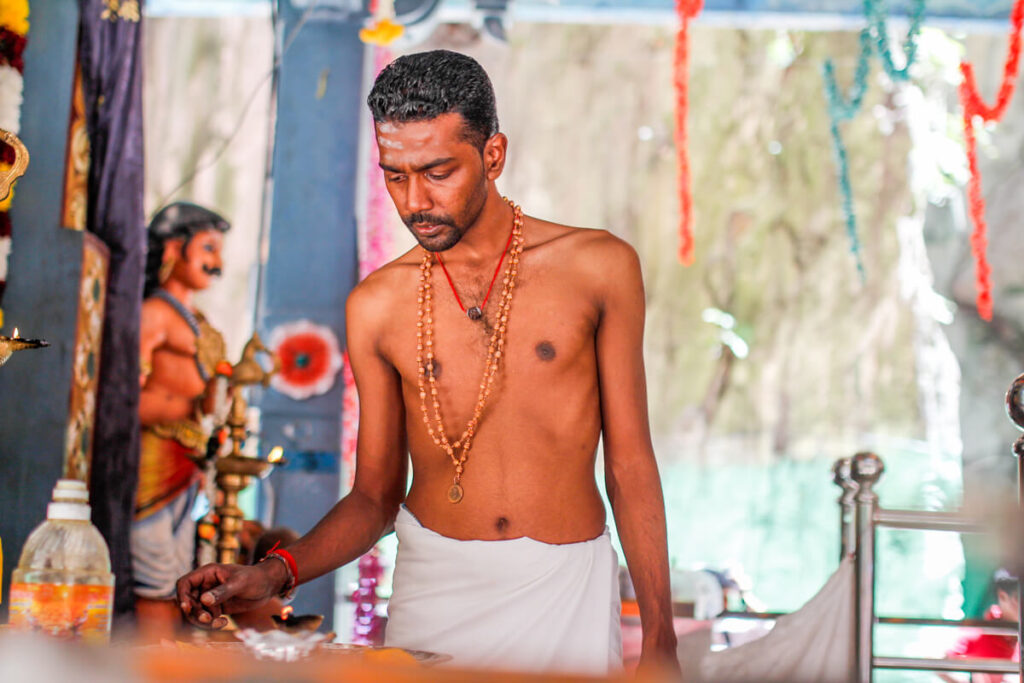
Conclusion: Batu Caves
If you’re in Kuala Lumpur, you shouldn’t miss the Batu Caves. Even though it’s often crowded, this place remains something very special. The gigantic Murugan statue, the colorful staircases, and the unique atmosphere of the caves make the Batu Caves a real highlight in Malaysia. Whether you want to learn more about Hindu culture or simply experience the impressive surroundings – this trip is guaranteed to be memorable.
- Batu Caves, Selangor Malaysia by Martina Birnbaum | istock.com
- Colorful steps by didoi | istock.com
- Statue Batu Caves by alvarobueno | istock.com
- Golden statue Batu Caves by Indra Tryana | istock.com
- Hindu statue of Murugan by Paul Maguire | istock.com
- Batu Caves with Hindu temple by al_la / istock.com
- Batu Caves temple inside the cave by Beboy_ltd | istock.com
- Entrance door to Sri Velayuthar Hindu Temple by Neil Bussey | istock.com
- Monkey God by Vladyslav Danilin | istock.com
- Monkey Batu Caves by Mateescu Mugur | istock.com